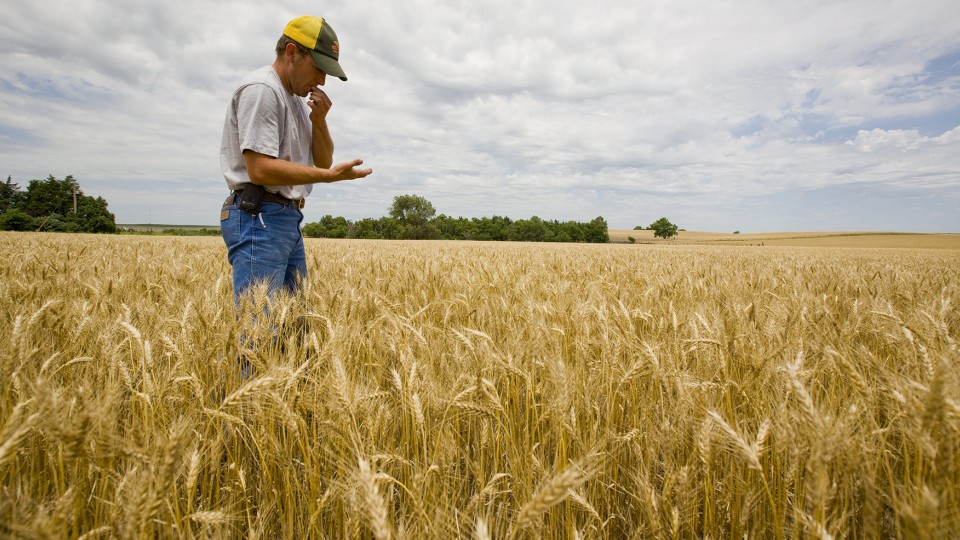· 4 min read
Forecast: Ag income still in doldrums; other sectors will grow

Nebraska agriculture has another down year ahead, according to the latest long-term economic forecast from the University of Nebraska-Lincoln’s Bureau of Business Research.
Other economic sectors in the state should see decent, though not spectacular, growth.
The forecast, which is updated twice yearly, predicts economic growth three years into the future. This forecast is economists’ first look at how 2018 might shape up. Nebraska economist Eric Thompson, director of the Bureau of Business Research, develops the forecast in consultation with the Nebraska Business Forecast Council, a group of economists who work for the university, the University of Nebraska at Omaha, utilities and various state government agencies.
Net farm income dropped to $4.57 billion in 2015, a decline of nearly 39 percent from its peak of about $7.5 billion in 2013. The forecasters predict an additional drop of about 11 percent in 2016, to a six-year low of about $4 billion, before net farm income rebounds in 2017. They predict farm income will grow 3.3 percent in 2018, reaching about $4.7 billion.
“Crop and livestock prices, which have fallen from near-record levels, should stabilize in 2017,” Thompson said. “In this more stable environment, agricultural producers should be able to grow profits by increasing efficiency. Increased productivity and better management of costs will allow producers to grow farm income in both 2017 and 2018.”
In the non-farm portion of Nebraska’s economy, the forecasters predict jobs will increase steadily, by 1.2 percent to 1.3 percent, through 2018. Non-farm personal income is expected to grow by about 4 percent a year on average, about twice the rate of inflation, which is expected to hover in the 2 percent range.
Most new jobs will come in the services sector, which the economists expect will gain nearly 20,000 jobs by 2018. The sector includes professional, scientific and technical services, along with health care, entertainment, recreation and the arts, and the hospitality industry. It now employs nearly 392,000 Nebraskans. The forecast is slightly more optimistic than the June 2015 long-term forecast.
Construction is expected to be the fastest-growing employment sector, predicted to grow 5 percent in 2016, 4 percent in 2017 and 3 percent in 2018. The sector now employs about 49,000 people and is predicted to surpass 55,000 by 2018.
Thompson cited increased residential construction and commercial development, as well as fuel tax hikes and other funding mechanisms that will enable state and local governments to expand road construction.
“Whatever the merits of this new road spending, there will be a benefit for construction employment over the next few years,” Thompson said.
Transportation also is expected to grow more quickly than other employment sectors. While railroads will be affected by softening demand for coal hauling, the trucking industry is expected to benefit from low diesel prices and an expanding U.S. economy. Transportation employment is expected to grow by up to 2 percent a year and to employ nearly 57,000 people by 2018.
“Challenges in attracting and retaining long-haul truckers, however, will limit job growth in trucking,” Thompson said. “The transportation industry will again become an engine of job growth in Nebraska.”
The full Business in Nebraska economic forecast is available on the Bureau of Business Research website, http://www.bbr.unl.edu.
The Nebraska Business Forecast Council is composed of John Austin, Bureau of Business Research, (retired); David Dearmont, Nebraska Department of Economic Development; Chris Decker, Department of Economics, UNO; Tom Doering, Nebraska Department of Economic Development (retired); Phil Baker, Nebraska Department of Labor; Ken Lemke, Nebraska Public Power District; Brad Lubben, Department of Agricultural Economics at Nebraska; HoaPhu Tran, Nebraska Department of Revenue; and Eric Thompson, Department of Economics and Bureau of Business Research at Nebraska.







